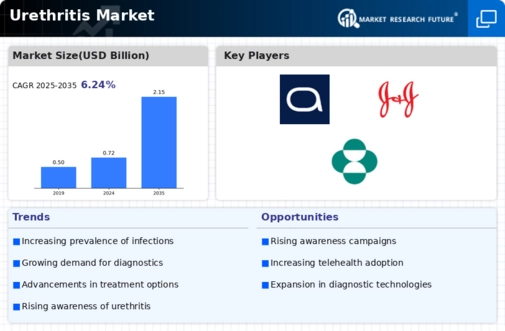Market Share
Urethritis Market Share Analysis
The Urethritis market is all about urethra inflammation, so companies that want to deal with this common genitourinary condition need to come up with good market positioning strategies. Different strategies are used by companies in this field to get and keep market share while offering answers for people with urethritis. Urologists and general practitioners are often the target market for companies in the Urethritis business. With this focused approach, we make sure that urinary health workers know about and think about the goods that are available to treat urethritis. Companies start teaching efforts about urethritis because they know how important it is for patients to know about it. These efforts help people learn about the reasons, symptoms, and treatment choices for urethritis so they can get medical help when they need it and understand their disease. Companies may work with STI clinics and sexual health centers because sexually transmitted diseases (STIs) can make urethritis worse. By working together, we can take a broader look at urethritis and make sure that the root reasons are found early and treated properly. It is very important to use digital health tools, especially now that telehealth is common. Companies spend money on online programs, mobile apps, and video talks so that people with urethritis can easily access and use healthcare choices. Differentiating goods in the urethritis market often involve creating treatments that are specially designed to deal with the reasons and symptoms of urethritis. These could be medicines, antibiotics, or skin treatments that are meant to work well for control. A smart move is to reach more markets beyond your local area. Companies get around in foreign markets by knowing the different rules and regulations, making sure their goods work in different cultures, and setting up marketing networks that let people all over the world get urethritis treatment. Companies spend money on clinical study to show that their urethritis-related goods work. This helps them build confidence and trust. Not only do healthcare workers like evidence-based answers, but they also help people learn more about how to treat urethritis. Companies may start patient support programs because they know how hard it is for people with urethritis. These groups give people with this urinary problem tools, knowledge, and help to deal with the physical and mental parts of living with it. It is very important to form relationships with urologist bodies. Companies work with these groups to be present at urethritis-related workshops, training events, and campaigns to raise awareness. This way, they can be known to both professionals and patients. Companies may start training programs on urethritis to help healthcare workers understand it better. Doctors, nurses, and other health care providers learn the latest about the illness, how to identify it, and treatment options in these sessions. Meeting tight regulatory criteria and ensuring product quality is essential. Companies make following the rules of regulatory bodies a top priority. This reassures both doctors and patients that goods linked to urethritis are safe and successful.

















Leave a Comment